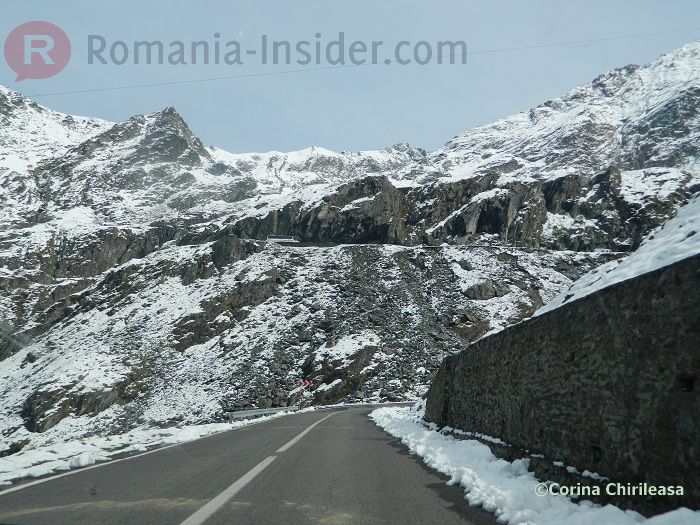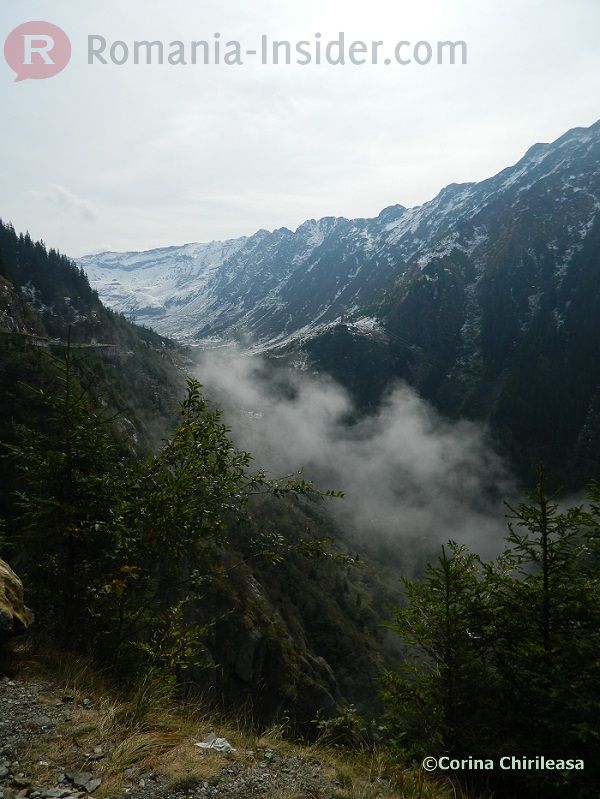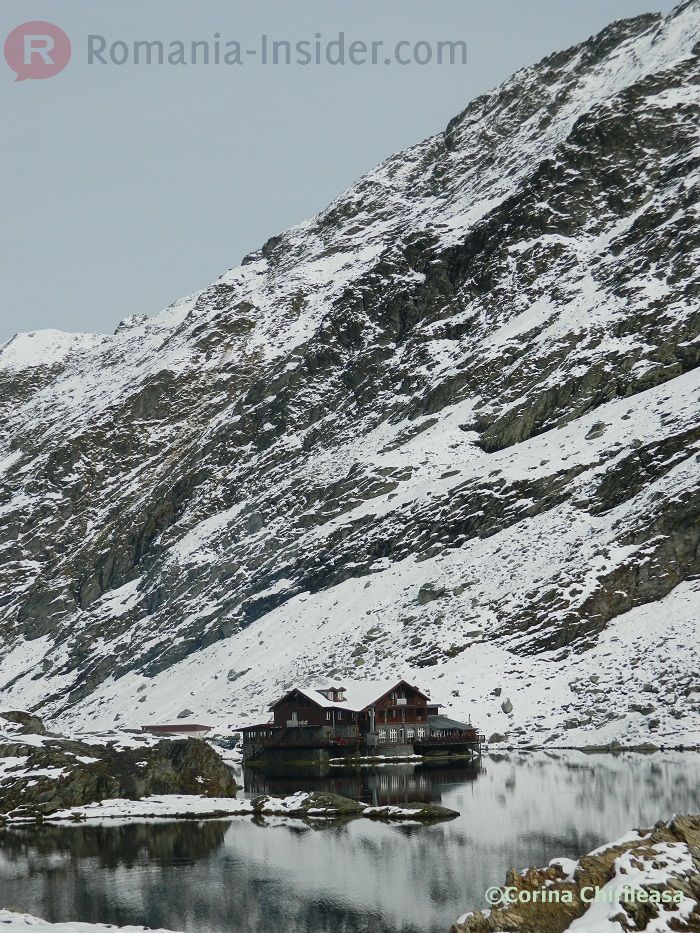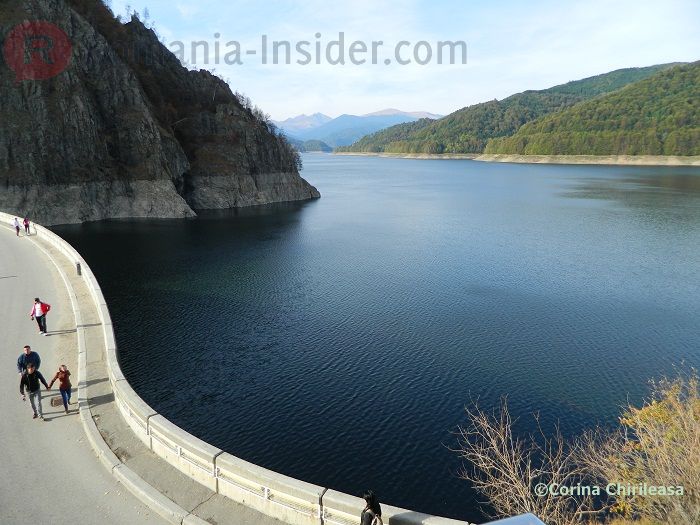Travel planner: The Transfagarasan, Romania's high altitude winding road to greatness

 To all adrenaline addicts out there, to seekers of the extreme, to lovers of the great outdoors and nature enthusiasts, I will abruptly start with one simple recommendation: drive on Transfagarasan, one of Romania's most spectacular mountain roads. The 90 kilometers of twists and turns between the two highest peaks in the country will, without any exaggeration, take your breath away. And indeed it made quite an impression on others too, as the area is sometimes used as background in foreign movies. In August this year, Sharon Stone and Andy Garcia filmed for their most recent movie, 'What about love', at Arefu, a village on the Transfagarasan route.
To all adrenaline addicts out there, to seekers of the extreme, to lovers of the great outdoors and nature enthusiasts, I will abruptly start with one simple recommendation: drive on Transfagarasan, one of Romania's most spectacular mountain roads. The 90 kilometers of twists and turns between the two highest peaks in the country will, without any exaggeration, take your breath away. And indeed it made quite an impression on others too, as the area is sometimes used as background in foreign movies. In August this year, Sharon Stone and Andy Garcia filmed for their most recent movie, 'What about love', at Arefu, a village on the Transfagarasan route.
When preparing for this trip in the Fagaras mountains, make sure you have plenty of space on your camera as you will want to capture every moment of it. There is still time to plan a get away on this route, which partially closes during winter time, usually in late October or early November, and normally re-opens at the end of June next year.
 The Transfagarasan journey is not only a trip through nature at its best, but it can also be a good trip through history. This road, which was built for military purposes and which connects Transylvania to Wallachia, Romania's historic regions, was built between 1970 and 1974, during the rule of communist dictator Nicolae Ceausescu. Ceaușescu wanted to ensure quick military access across the mountains in case the Russians ever invaded. So the road was built by the military forces- we have them to thank for this amazing route, and why not, even the dictator himself. Imagine building this road done nowadays – how long would it take? And would it be done at all? Four years in the 70s for this incredibly difficult to build road, which needed 60 tonnes of dynamite to carve a passage through rock and crag versus how many years so far for the Transylvania highway? Built mostly in a plateau region, and not yet finalized?
The Transfagarasan journey is not only a trip through nature at its best, but it can also be a good trip through history. This road, which was built for military purposes and which connects Transylvania to Wallachia, Romania's historic regions, was built between 1970 and 1974, during the rule of communist dictator Nicolae Ceausescu. Ceaușescu wanted to ensure quick military access across the mountains in case the Russians ever invaded. So the road was built by the military forces- we have them to thank for this amazing route, and why not, even the dictator himself. Imagine building this road done nowadays – how long would it take? And would it be done at all? Four years in the 70s for this incredibly difficult to build road, which needed 60 tonnes of dynamite to carve a passage through rock and crag versus how many years so far for the Transylvania highway? Built mostly in a plateau region, and not yet finalized?
 Going back to the road, driving from Sibiu – or Sighisoara, reveals the most spectacular part of the road first, so it's worth starting there, if you have a choice. The road starts close to Arpasu de Jos – where you will also enjoy a spectacular view of the mountains you're about to climb, at over 2,000 meters – and goes up rather fast – and when I say fast, I only mean 40 kilometers an hour, which is the legal speed, and frankly the safest speed to take the curves.
Going back to the road, driving from Sibiu – or Sighisoara, reveals the most spectacular part of the road first, so it's worth starting there, if you have a choice. The road starts close to Arpasu de Jos – where you will also enjoy a spectacular view of the mountains you're about to climb, at over 2,000 meters – and goes up rather fast – and when I say fast, I only mean 40 kilometers an hour, which is the legal speed, and frankly the safest speed to take the curves.
 Driving so slowly provides more time to enjoy the view, up until the Balea lake, which is the highest point of the journey. At this time of the year, the higher areas are already covered with snow. When we drove there last week-end, the peaks had 30 centimeters of snow on them.
Driving so slowly provides more time to enjoy the view, up until the Balea lake, which is the highest point of the journey. At this time of the year, the higher areas are already covered with snow. When we drove there last week-end, the peaks had 30 centimeters of snow on them.
 From Balea Lake – where you can also stay over night, as there are two lodging facilities, one of them actually on the lake, and where you can stop to buy some food, take some pictures – you will slowly start to descend on the other side of the mountains, where you will discover a different world.
From Balea Lake – where you can also stay over night, as there are two lodging facilities, one of them actually on the lake, and where you can stop to buy some food, take some pictures – you will slowly start to descend on the other side of the mountains, where you will discover a different world.
 From the snow covered peaks you will drive onto a more gentle descent, with mountain tops and valleys covered in green – brown velvet like grass. Seeing the road winding underneath you – on both sides of the mountain – will surely take your breath away.
From the snow covered peaks you will drive onto a more gentle descent, with mountain tops and valleys covered in green – brown velvet like grass. Seeing the road winding underneath you – on both sides of the mountain – will surely take your breath away.
 After getting used to the road and its beauties, the next breathtaking stop should be at the Vidraru dam and the Vidraru lake. The artificial lake was created in 1965 by the construction of the Vidraru dam on the Arges river, for electricity production. A village was submerged at the bottom of the lake. The construction of the Vidraru dam took five years, from 1960, and upon completion, it was the 8th highest dam in Europe and the 20th in the world. The curved dam is 166 meters tall, and the water reaches a depth of 155 meters. The underground power station is located at a depth of 104 meters and can provide annual energy production of 400 GWh.
After getting used to the road and its beauties, the next breathtaking stop should be at the Vidraru dam and the Vidraru lake. The artificial lake was created in 1965 by the construction of the Vidraru dam on the Arges river, for electricity production. A village was submerged at the bottom of the lake. The construction of the Vidraru dam took five years, from 1960, and upon completion, it was the 8th highest dam in Europe and the 20th in the world. The curved dam is 166 meters tall, and the water reaches a depth of 155 meters. The underground power station is located at a depth of 104 meters and can provide annual energy production of 400 GWh.
 The view from the dam itself is breathtaking, but even better is the view from higher ground, near the metal statue of Prometheus shown with a bolt of lightning, a symbol of electricity – also nicknamed the Power Man. From the top, the scale and drama of the vistas is truly awe inspiring.
The view from the dam itself is breathtaking, but even better is the view from higher ground, near the metal statue of Prometheus shown with a bolt of lightning, a symbol of electricity – also nicknamed the Power Man. From the top, the scale and drama of the vistas is truly awe inspiring.
 Continuing the journey, the next stop could be at the Poienari castle, a secondary residence for Romanian ruler Vlad Tepes- of Dracula fame. A 1,480 step staircase will lead you to the citadel on top of the mountain. The citadel, currently a ruin, was built as a fortress against the Ottoman Empire's armies.
Continuing the journey, the next stop could be at the Poienari castle, a secondary residence for Romanian ruler Vlad Tepes- of Dracula fame. A 1,480 step staircase will lead you to the citadel on top of the mountain. The citadel, currently a ruin, was built as a fortress against the Ottoman Empire's armies.
 The Transfagarasan road will take you through some villages that have their own charm – on both sides of the mountains, meaning in both Transylvania and in Wallachia. You will notice the different house styles and the rural soul of Romania. Having driven on this road will get you close to the real Romania.
The Transfagarasan road will take you through some villages that have their own charm – on both sides of the mountains, meaning in both Transylvania and in Wallachia. You will notice the different house styles and the rural soul of Romania. Having driven on this road will get you close to the real Romania.
Our next trip will be on Transalpina, the highest altitude road in Romania.
Corina Chirileasa, corina@romania-insider.com
(photos: Copyright Corina Chirileasa/Romania-Insider.com)











